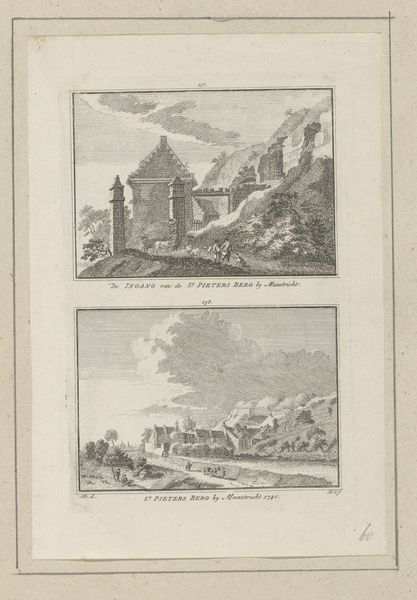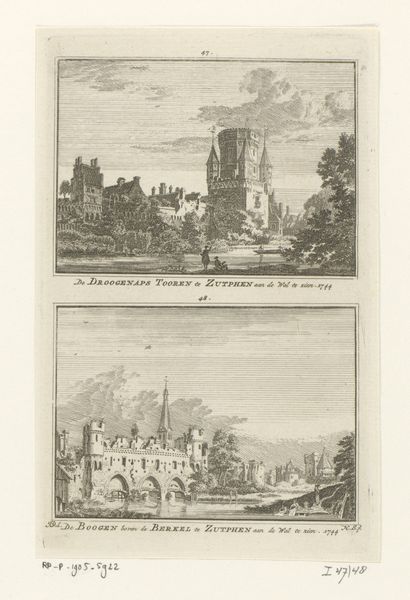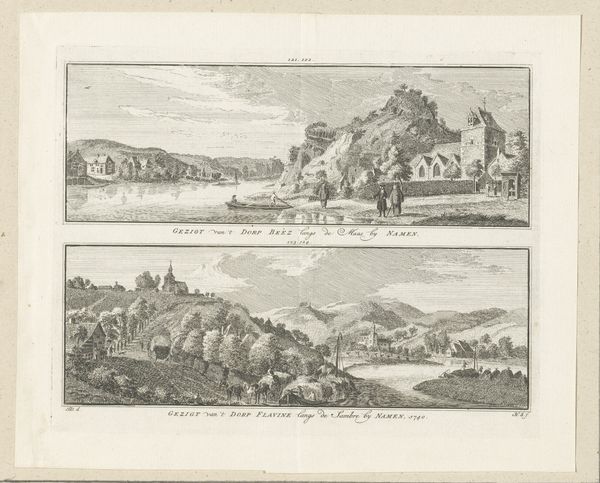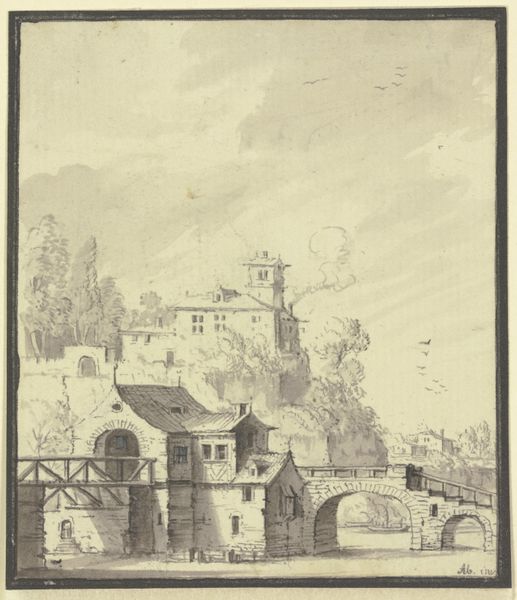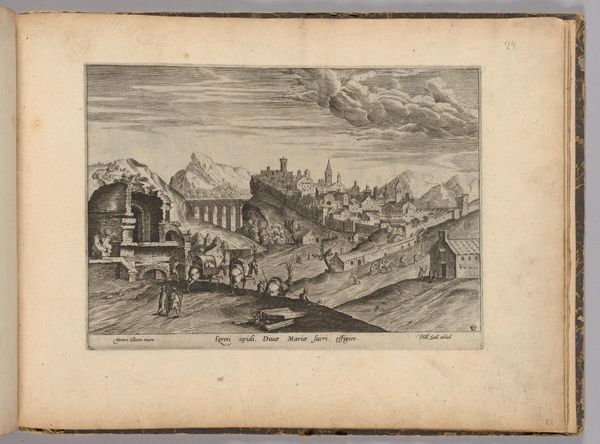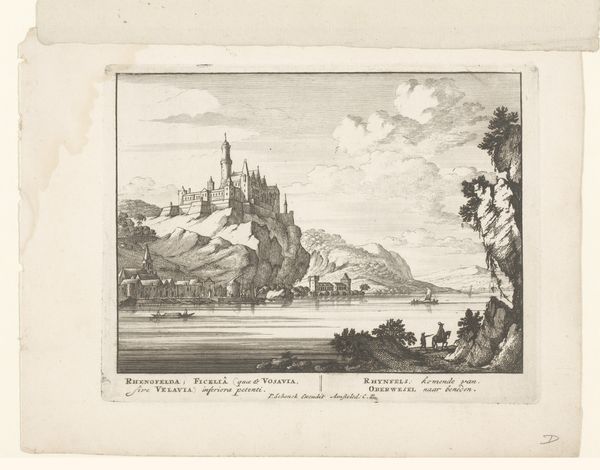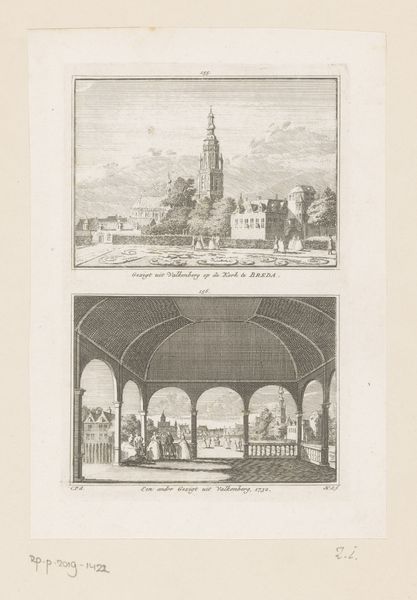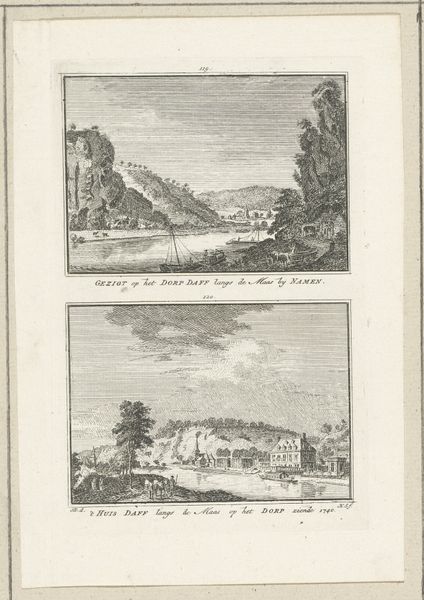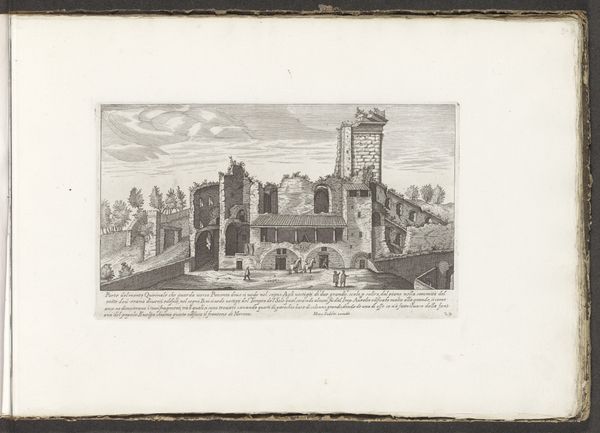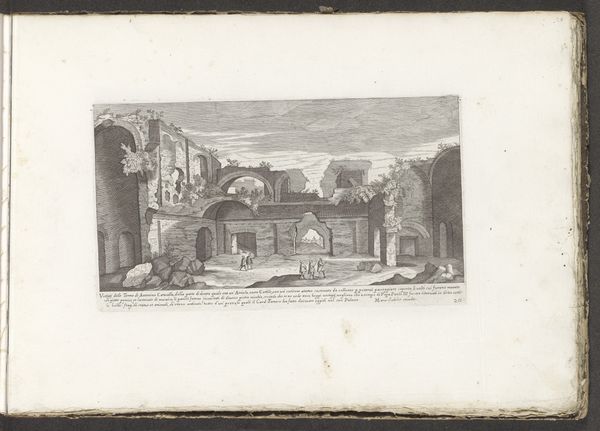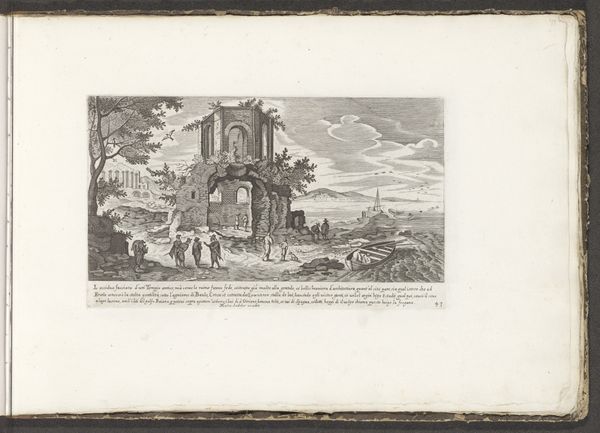
Gezicht op het Kasteel en gezicht op de hoofdwacht van het Kasteel, te Namen, 1740 1746 - 1792
0:00
0:00
Dimensions: height 168 mm, width 111 mm
Copyright: Rijks Museum: Open Domain
Curator: What a fascinating find! This print, attributed to Hendrik Spilman and dated between 1746 and 1792, offers two distinct perspectives of the castle at Namur. It's currently housed in the Rijksmuseum. Editor: It certainly feels like stepping back in time. There's a melancholic, almost ghostly air about it, perhaps due to the monochromatic rendering. I am particularly intrigued by the contrasting composition; the upper scene feels expansive, the lower constricted and focused. Curator: I agree; the contrast is striking. The upper panel, titled “Gezicht op het Kasteel te Namen” provides a sweeping vista, showcasing the castle's imposing presence overlooking the city. Note how Spilman employs a relatively high horizon line. Editor: But let's shift to the "Hoofdwacht op het Kasteel." I am drawn to how the image seems to frame the daily life behind and in front of the main guard. The rough stone and the evident craftsmanship, the labor of quarrying, shaping, and construction, speak volumes. The medium and materials involved underscore its function, protection, and social structure. Curator: The technique employed allows for remarkable detail, especially in rendering architectural textures. If we were to engage in semiotic analysis of this piece, the castle itself looms large as a signifier of power. Editor: Precisely! And those figures, almost like ants going about their business, add a crucial layer to the narrative. Their role as both part of the fortress ecosystem and potentially its subject reveals inherent complexities within the power structure. Did Spilman intend for such readings to resonate, or are we ascribing contemporary awareness onto it? Curator: I believe Spilman consciously chose this viewpoint and framing to represent these contrasting spatial relationships, the overall texture created with engraving evokes a feeling of precision and technical prowess appropriate to the depicted military architecture. Editor: Yes, the dialogue between structure and form resonates strongly, it is always interesting to speculate how the artist felt about labor, craft, and power when creating the image. Curator: An intriguing journey into 18th-century Namur. The careful rendering, and balanced structure provide more than documentary interest. Editor: Indeed; it prompts contemplation on labor, security, and historical consciousness – how we are all bricks within these societal architectures.
Comments
No comments
Be the first to comment and join the conversation on the ultimate creative platform.
